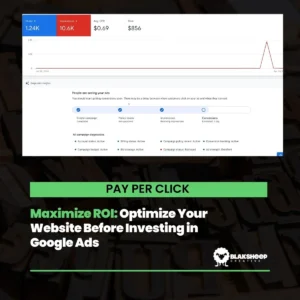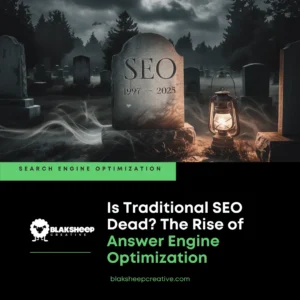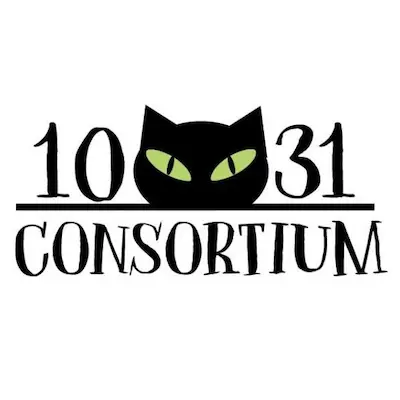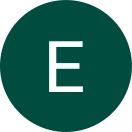If you want to rank higher on Google, it’s time to start demonstrating your E-A-T.
Demonstrating a high degree of E-A-T not only improves your chances of ranking higher on relevant queries it also helps insulate your site from taking a dip in visibility after a core update and shows users that your content is reliable information.
Implement these tactics for greater search visibility today!
Continue reading to learn easy ways that you can implement and also avoid when demonstrating E-A-T.
This article provides a simple-to-follow listing of tactics that you can use to incorporate to increase your site’s visibility in Google, using E-A-T as your guidepost.
Let’s get started!
What is E-A-T?
E-A-T is an acronym for Expertise, Authoritativeness, and Trustworthiness.
Using this acronym as our guidepost, Google has been very clear that a web page’s rankings are directly proportional to its E-A-T — or how expert, authoritative and trustworthy it is.
But what does this mean?
First, let’s look at what Google doesn’t want us to do.
What is an example of low E-A-T?
When it comes to providing search results for general terms, Google is transparent about its search for the most relevant and expert site on that topic.
This means that it will be hard to rank if you are a new site or a site that is not considered authoritative and trustworthy on the topic in question.
Problem: If we look at our search result for [weight loss], we can see that many high E-A-T sites are ranking for this term.
This means that if your goal is to rank for the keyword [weight loss], you will need to work your way up to earning more visibility.
Additionally, if your site is low E-A-T on the keyword [weight loss], it will likely continue to rank lower in the future.
You can avoid these results by remembering that Google likes to see high E-A-T sites in the #1 and #2 positions.
So what is an example of a higher E-A-T site?
For [weight loss], we would like to see a high degree of expertise, authoritativeness, and trustworthiness from the website ranking in position 1 or 2.
This means we want to see a strong site with minimal errors and an authoritative weight loss source.
Google’s algorithm looks for this in many different ways, including looking at website quality metrics such as pogo-sticking (when users click the result only to bounce back), returning bogus or broken links from outside the site, usage metrics such as bounce rate and time on page, low load times, etc.
Things that can hurt your E-A-T.
Numerous things can hurt your E-A-T. Let’s take a look at the most common ones:
Omitting attribution and evidence
Would you take financial or medical advice from someone who claims to be an expert but refuses to substantiate their claims or reveal their name and credentials?
The online equivalent of this would be publishing content without listing the author or sources.
Sites that do not supply evidence for their claims, especially on YMYL sites like finance, news, civics, and (especially) medical websites, are, according to Lily Ray of Amsive Digital, “just making a lot of bold statements without necessarily stating where they got this information from. There is no proof or evidence on the site to back up those lofty promises made throughout its content; some may be outright dangerous, which will likely result in Google cracking down soon enough.”
YMYL websites fall under more intense scrutiny as these sites impact people’s lives and livelihoods.
If you are asking your users to trust that your site is offering trustworthy information, demonstrate that you know what you’re talking about by supplying the credentials and evidence for your claims.
Some examples of YMYL websites are:
- Medical sites, especially those that deal with the diagnosis or treatment of diseases
- Financial advice and information
- Legal advice
- News sites
- Civic information such as voting, jury duty, driving licenses, permits
Adding self-promotion links on third-party sites:
Similar to omitting attribution and sources, adding self-promotion links on third-party sites demonstrates that you are not an expert in your field.
These sites are often found in the business directory sections of generic websites owned by large companies, and they add only a keyword for search engine optimization purposes.
Publishing content with no value to its intended audience.
The internet has made it easy to publish content with little effort. Still, often this results in spammy or useless articles.
Expertly written content is not simply about the number of words; it’s about quality.
Trying to game the system by publishing lots of low-quality content on your site or on another site that you control is an example of trying to rank high without providing value to your users.
When this is done for search engine optimization purposes, it will not get you far in Google’s eyes due to the lack of E-A-T.
Illegal and low-quality link building:
Doing things like spamming forums and websites with links back to your site demonstrates a lack of E-A-T and often deindexing (removing from the index) on Google.
If you’re trying to demonstrate E-A-T, avoid doing unnatural link building that looks like you’re trying to game the system and do things that would indicate that your site is a legitimate and authoritative source in its field.
As Search Engine Watch points out, “Google has made it clear through various updates over the years what quality links are: editorial votes of confidence from other websites. And if Google doesn’t trust or value the site on the other end of your link, you risk getting some penalization or even a penalty.”
This means that if your company’s website is linked to by an external website with low domain authority (a numerical value given to sites based on how “trustworthy” the search engine considers it), chances are Google won’t trust that site either.
Conversely, if a high-quality page (such as a Wikipedia page) or a page with high domain authority links to your site, Google will rank it higher.
Thin or Duplicate Content
Google’s algorithms can find duplicate content, even if it’s slightly different from other articles. If your website’s content is too similar to other sites, you might get penalized for duplicate content.
Spun Content
Google also recognizes “spun” content. The spun content is rewritten (often by a computer) that is of a lower quality than the original. The computer does this by getting synonyms from a thesaurus and then replacing words with synonyms. Still, it can’t replace things like proper names or technical terms.
As an example, I’ll show you how Google sees my search phrase [weight loss]. In the results below, you can see the subtle differences between content that has been spun and content that hasn’t.
It may be subtle to humans, but Google can easily detect the difference and will rank the content with more E-A-T over the spun result.
Original: The site is considered high-quality because the content is original and unique.
Spun: Because the site spins content using the original source, Google considers it low-quality. Furthermore, the content is almost unreadable, which makes Google question the quality of the site.
Copied: The site is considered low-quality for spinning content without using the original source. The content is almost unreadable, and this makes Google question its quality.
Be original!
If you have a high degree of expertise, authoritativeness, and trustworthiness according to Google’s algorithm for a particular category/keyword, it will rank your site higher than a competitor who copies your content.
Doorway Pages
Let’s take this next section straight from Google:
“Doorways are sites or pages created to rank for specific, similar search queries. They are bad for users because they can lead to multiple similar pages in user search results. Each result ends up taking the user to essentially the same destination. They can also lead users to intermediate pages that are not as useful as the final destination.”
Here are some examples of doorways:
- Having multiple domain names or pages targeted at specific regions or cities that funnel users to one page
- Pages generated to funnel visitors into the actual usable or relevant portion of your site(s)
- Substantially similar pages that are closer to search results than a clearly defined, browseable hierarchy.”
Source: Google Search Central
As you can see, Google isn’t a fan of doorway pages. If you’re setting up a page with the sole purpose of ranking highly for specific search queries only, it probably won’t end well for your site.
Over General Content
You can’t be a jack of all trades and master of none.
Sure, producing content on a bunch of different topics may help you appeal to a larger audience. But in Google’s eyes, it means that you’re not a master of any one category.
While a broader appeal may attract more visitors, it also means that you won’t be as authoritative or have as much E-A-T within the specific groups of people who are looking for experts on an extremely narrow topic. In Google’s eyes, this is a bad thing.
You’ll find this type of content most often in the form of “expert directories.” I’ve seen articles on “top 10” lists where I can tell that the author doesn’t have a high degree of expertise. This is simply because there’s no way they could be an expert on everything listed in one article!
So if you plan to create content on multiple topics, make sure that you can demonstrate expertise in each one.
How would this look?: “This is the best SEO company!” vs. “We’ve been in business for 15 years and have helped hundreds of small & medium-sized businesses rank higher in search results.”
The second option shows that there’s a good chance that the author knows what they’re talking about, and there’s a good chance you’ll find value in their words.
Unmoderated User Generated Content (UGC)
If you have a site where users can submit their own content, the quality of that content will directly affect your E-A-T.
Therefore, it’s in your best interest to ensure that user-generated content is moderated and approved before it goes live on your site. At the very least, UGC should be checked for accuracy.
Spam should be deleted.
Another issue is commenters leaving a lot of personal information or giving bad medical advice.
Google counts all of that content against your site.
Make sure that you can demonstrate your expertise in whatever topic you’re moderating UGC for. Also, make sure that the content is up to par with Google’s Webmaster Guidelines.
Sneaky affiliate links
Affiliate marketing is all the rage these days. However, if you have them on your site, you should disclose that you’re an affiliate.
Designed to help you make money from your website, affiliate links should not be placed within the content on Your Money or Life pages. This can muddy what users think they are clicking if it’s not clearly indicated that these sites have an agenda behind them.
If you don’t make it very clear throughout the content that these are affiliate links and use informational “Your Money or Your Life” pages to push users into buying products, search engines might take offense.
And with Google’s new product reviews update, which went into effect in June 2021 – they seem even more strict about what can appear on their site.
How to convey more expertise, authority, and trustworthiness
In addition to avoiding the practices listed above, there are numerous ways that you can show search engines and audiences your content is well-researched, accurate, and trustworthy.
Here are some easy ways to demonstrate and increase Google E-A-T:
Follow search quality evaluator guidelines.
SEOs often fail to read the actual guidelines set out by search engines because they are so lengthy and complex. If you want to demonstrate E-A-T, however, you must master them.
You should also understand all of Google’s Search Quality Rater Guidelines.
Google uses its Search Quality Rater Guidelines to determine whether web pages are high-quality and worthy of its index.
Follow this link to read them in their entirety
Create high-quality, original content
One of the easiest ways to demonstrate your website’s E-A-T is by producing high-quality, original content.
Give your readers a reason to come back by providing them with new and valuable information.
I recommend taking the time, effort, and resources necessary to create original content that will actually solve users’ problems.
It’s all about giving people the best experience possible. If you do this, Google will recognize it, and your SEO efforts will be rewarded.
Business owners often struggle to demonstrate their expertise, authority, and trustworthiness.
This is a problem because it’s hard for them to rank in search engines and demonstrate credibility.
There are many ways that you can demonstrate your E-A-R as a business owner. One of the easiest ways is by producing high-quality content on your website or blog.
But what if you don’t have time?
That’s where we come in.
If you’re looking for original content that will demonstrate your expertise, authority, and trustworthiness to Google’s search algorithm, take a look at our content marketing services.
We’ve been creating original content for businesses and websites for over two decades.
For more information, or if you’d like to work with us, contact us right away!
Citations demonstrate E-A-T
Another way to demonstrate your E-A-T is with citations.
High-quality links from sources such as Wikipedia articles, the Better Business Bureau, News Sites, or other authoritative sites demonstrate authority and trustworthiness.
These links demonstrate to Google that your website is an accurate source of information and should be ranked highly for any queries related to the topic in which you’re cited.
In other words, if the site quality that is linking to yours is higher, in Google’s eyes, that link is more powerful than one from a lower-quality site.
Therefore, when possible, you should be looking to get links back to your website by creating high-quality content that other sites will want to cite on their pages. Remember: the better the site linking back to yours, the more weight Google will attribute to that link.
Building citations is time-intensive, but it’s essential.
Your website needs high-quality links from other sites to demonstrate E-A-T and rank higher in Google search results.
We can help you get those high-quality links by creating citations that demonstrate your E-A-T.
Contact us today to learn more about our citation building services.
Add Structured Data to your Website
Structured data represents a significant opportunity to demonstrate E-A-T.
If it is on your site, Google will consider it a sign of authority and expertise in the areas you specify.
Search engines use schemas, such as Schema.org Structured Data, to help them understand your site’s content.
If you want to really dive into why structured data helps demonstrate your E-A-T, read this article at Search Engine Watch. (They have several SEO articles that help us in the SEO industry!)
Create profiles on Wikipedia, IMDB, Yelp & other industry pages
If you’re an expert in your field, having a profile on authoritative sites can demonstrate your expertise.
Create profiles on applicable social media platforms.
A comprehensive social media presence can demonstrate expertise.
Learn more about the importance of your social media presence in our recent blog post, “Social Media for Small Businesses.”
Be sure to create your GMB.
If you’re a local brick-and-mortar business, you can demonstrate your E-A-T by having a complete Google My Business listing.
Who better for Google to trust than themself?
Google My Business is a powerful tool for brick-and-mortar businesses, but it can be hard to get started.
Getting your business listed on Google Maps and other search engines is essential if you want to demonstrate E-A-T.
We’re here to help! BlakSheep Creative offers comprehensive Google My Business creation and optimization services that will demonstrate your expertise in the eyes of Google.
Our digital marketing experts will create or optimize your GMB listing with high-quality photos, accurate information about your company, and links back to relevant pages on your website.
Contact us today for more details about our services!
Answer questions on Quora & other Q&A sites
Q&A sites demonstrate expertise and trustworthiness. If you have a presence on these platforms that shows that you’re an expert in your field or niche, it will prove to Google that you know what you’re talking about.
A few things you should know about Q&A sites, though: To demonstrate your expertise, authoritativeness, and trustworthiness well on these platforms, you should ensure that all of the content that you contribute to is yours and not from others.
You can’t just share articles from other sources – it has to be your original information.
If someone else posts the content, you’re just building yourself a link, not demonstrating that your expertise is your own. You should also avoid spamming other contributors’ posts with links to your other material.
When it comes to authority and trustworthiness, if you demonstrate leadership skills on Q&A sites, others will follow you. The more followers you have on these platforms, the more expertise, authoritativeness, and trustworthiness in Google’s eyes.
Have a blog in which you demonstrate your expertise in the various fields in which you’re cited.
A blog post is one of the best ways to demonstrate your expertise.
If you don’t have a blog yet, creating one is easy, and it will bring more benefits than just demonstrating to Google that you’re an authority in your field. Here are some reasons why you should be blogging:
- It helps establish your company as a leader in its industry.
- You can demonstrate leadership skills by being a go-to source for information.
- It will demonstrate expertise (a blog on your profession/field of interest is such an easy way to prove that you’re an expert)
- Following the steps above, such as getting links from high-ranking sites, can demonstrate authority and trustworthiness.
You want to demonstrate your expertise, but it can be hard to know where to start.
Many ways to demonstrate your expertise online, but most of them require a little work.
One way is by writing blog posts on topics related to your industry or profession. Blogging is an easy way for you to demonstrate authority and trustworthiness because it’s so easy for Google to see that you’re an expert on the topic at hand.
BlakSheep Creative offers comprehensive blog post creation services that will help make sure all of your content is original and high-quality and optimized with SEO best practices like keyword research and proper title/meta creation.
Our content creators are some of the best in the business and will work with you to create great blog content demonstrating your expertise.
Call us today for more details about our services!
Create a YouTube account & demonstrate expertise through video
If you can demonstrate your expertise in a video by showing how-to steps, answering questions, sharing helpful information, etc., it’s another way to demonstrate your knowledge.
YouTube is one of the most significant search engines online, so it’s a good idea to demonstrate your expertise through video there as well!
Some in the SEO community consider your YouTube channel to be one of the significant ranking factors in Google’s E-A-T algorithm.
Update, remove, redirect, rewrite, or consolidate your content.
Consistently maintaining your content shows that you are committed to providing accurate, up-to-date information every time it’s needed. That means fewer irrelevant organic search results and more relevance in your niche.
If there is content on the page that doesn’t fit, get rid of it. Do this by updating any outdated or incorrect content, or you can even rewrite it. If the information is dated and no longer relevant, consider redirecting it to a new page on your site where people can find more current information.
This allows users to trust that they’ll always get the most up-to-date information from your site. And that’s precisely what Google wants when it comes to top search rankings.
Avoid Low-Quality Content
A few things demonstrate low-quality content that you should avoid if you want to demonstrate E-A-T.
The following are examples of what Google would consider low-quality content.
- Low-quality content is any of the following: Content primarily copied from another source or doesn’t demonstrate original thought.
- The content is found primarily on sites that are lacking in authority and trustworthiness.
- Duplicate content across your site(s) – content found on multiple pages with few changes between them.
- Content that exists primarily to link to another site, not demonstrate the topic you’re talking about.
- Articles with little text and many images – search engines see these as an attempt to make content appear more important than it really is by making it look like there’s a lot of information on the page when it can be very thin.
Google constantly makes changes and algorithm updates to demonstrate quality for users, which we also apply to evaluate webpages.
There’s a good chance that the search quality raters will penalize you for low-quality content, trading off your E-A-T as a result.
Include citations and references to demonstrate research.
Your site needs to be credible, so adding citations and references is a great way to demonstrate the validity of your information. When you use other authoritative sources’ data or quotes, it bolsters your own website and its content by showing that you’ve done the work for readers who want proof of their findings.
These citations and references also demonstrate your expertise in the topic because you’ve read related books, white papers, or blog posts that provide more information.
Here’s one example: The Economist (2008), “Sources of global growth.” https://www.economist.com/node/12341137
Here’s another: The Economist (2008), “Sources of global growth.” https://www.economist.com/node/12341137
Here’s another: The Economist (2008), “Sources of global growth.” https://www.economist.com/node/12341137
If you link to resources, be sure to credit the author and not infringe on someone else’s copyrighted work.
Improve your site’s architecture.
While this is only one small aspect of showcasing your E-A-T, it’s worth noting that Google rewards sites with an appropriate site structure. That means you should organize pages on your website like a book (or, even better, like the Bible).
A well-designed website can help to convey the appropriate amount of expertise. Use logical parent/child relationships within your categories, subcategories, and articles or products on your site for easy navigation by users and search engines looking up information about a given topic area you specialize in.
This strategy will also isolate content that might not be SEO-friendly, such as UGC (user-generated content) and adult material while maintaining quality throughout all other areas!
Manage your brand’s reputation on third-party platforms.
If you have a strong presence across all types of platforms, it increases your site’s visibility and reliability in the eyes of search engines and audiences alike.
In addition to being where your audience already is, having a social media presence indicates that you’re committed to providing relevant content consistently.
If you have a Facebook page for your brand, ensure that all information is accurate and up-to-date. Be sure to post relevant content at least once a week.
In addition to updating your own platform profiles, it’s essential to manage any negative news or reviews about your brand on social platforms.
Your company’s social media presence directly reflects your brand, and not responding appropriately on review websites can demonstrate poor E-A-T.
If you’re monitoring mentions of your business or services online, be sure that you follow up with customers and reach out to those who leave negative reviews. Customer care is an essential aspect of demonstrating E-A-T. Be sure that you:
This lets users know that you’re available to help them directly. It shows potential customers that you’re committed to taking care of your clients.
Your business has a reputation that you want to protect.
Having positive reviews is a great way to demonstrate your E-A-T.
Our reputation management services can help you demonstrate your expertise to search engines, potential customers, and the public at large. We ensure that you can show E-A-T to even more people online by improving how searchable your brand is!
Contact us to learn more about what we can do for you.
Find new ways to increase transparency and trust.
Provide more information about your business (and demonstrate more of your E-A-T) by adding a blog to your site.
Whether you write posts yourself or feature guest bloggers, Google considers blogs valuable resources for comprehensive information on specific topics. Blogs demonstrate that you are an expert in your industry, even if it’s not directly related to your products or services.
Blogs
Adding a blog can demonstrate your business’s expertise by helping you show your experience and knowledge in the field, as well as establish E-A-T. Additionally, including valuable insights on different topics means that you’re providing potential customers with another way of learning about what you have to offer.
But just adding a blog isn’t enough. Blogs demonstrate E-A-T only if they’re updated regularly and provide helpful information t
o users. That means that just posting articles for the sake of having blog content on your site won’t cut it. However, you can still incorporate strategies like guest blogging or creating instructional/how-to/explainer videos to demonstrate E-A-T.
Your Website’s Home Page
Include a video on your homepage that showcases how you work. Demonstrating what makes your business unique lets users know exactly the type of value you offer them right from your homepage and can show E-A-T through showcasing quality services or products.
Even if you’re a brick-and-mortar building, demonstrate your E-A-T online by including information like opening hours and available services on your homepage.
Gather reviews from past users of your products or services. Display testimonials or reviews about your business right on your site to demonstrate that other customers have had positive experiences with your business, and demonstrate E-A-T by showing off how many people like your brand.
Location Pages
If you’re a local business, include customer reviews on service or location pages to demonstrate E-A-T. Positive studies show that you’ve given value to the customer in the past and that they are likely to return, which is an integral part of demonstrating E-A-T.
Photos
If you’re a service business, demonstrate your E-A-T by including pictures of past customers your services have positively impacted. This will show that those users had positive experiences with your company and demonstrate your value, an integral part of E-A-T.
Demonstrate E-A-T by including images of products or materials that demonstrate your brand ethos. If you’re a clothing boutique, have pictures of your clothing line; if you’re a cake designer, show off past cakes (don’t forget to include photos of the finished product).
This will demonstrate that you’re willing to display your product, which is an essential part of E-A-T – not only because it lets users know what they’ll get if they work with you but because showing off these products demonstrates the quality of said products.
To demonstrate E-A-T through images, make sure to include pictures of your actual products, not just mock-ups or pictures of models wearing them. This will confirm that you are an actual business with real products to offer, which is another vital part of demonstrating E-A-T.
In other words, no matter how you demonstrate E-A-T, remember that it’s about providing value to the customer. By doing so, you show all the necessary components of E-A-T, proving to Google that your business is an expert in your field and subsequently increasing your site’s visibility in search results.
E-A-T isn’t increased overnight, and neither is expertise.
Increasing your E-A-T takes time. If you demonstrate your business’s expertise by including any of the above formats on your site, there are specific tactics you can use to increase E-A-T.
Be prepared to see fluctuations with broad core algorithm updates.
These updates can shift rankings dramatically. Keep an eye on the core Google algorithm and know what to expect during significant changes. Then take steps to increase your E-A-T in light of any new developments.
We hope that this article was helpful to you!
If you would like to share additional information about this topic, feel free to leave any feedback.
And if you liked this article, don’t forget to share it with your friends on social networks! Thank you very much! 🙂
















































